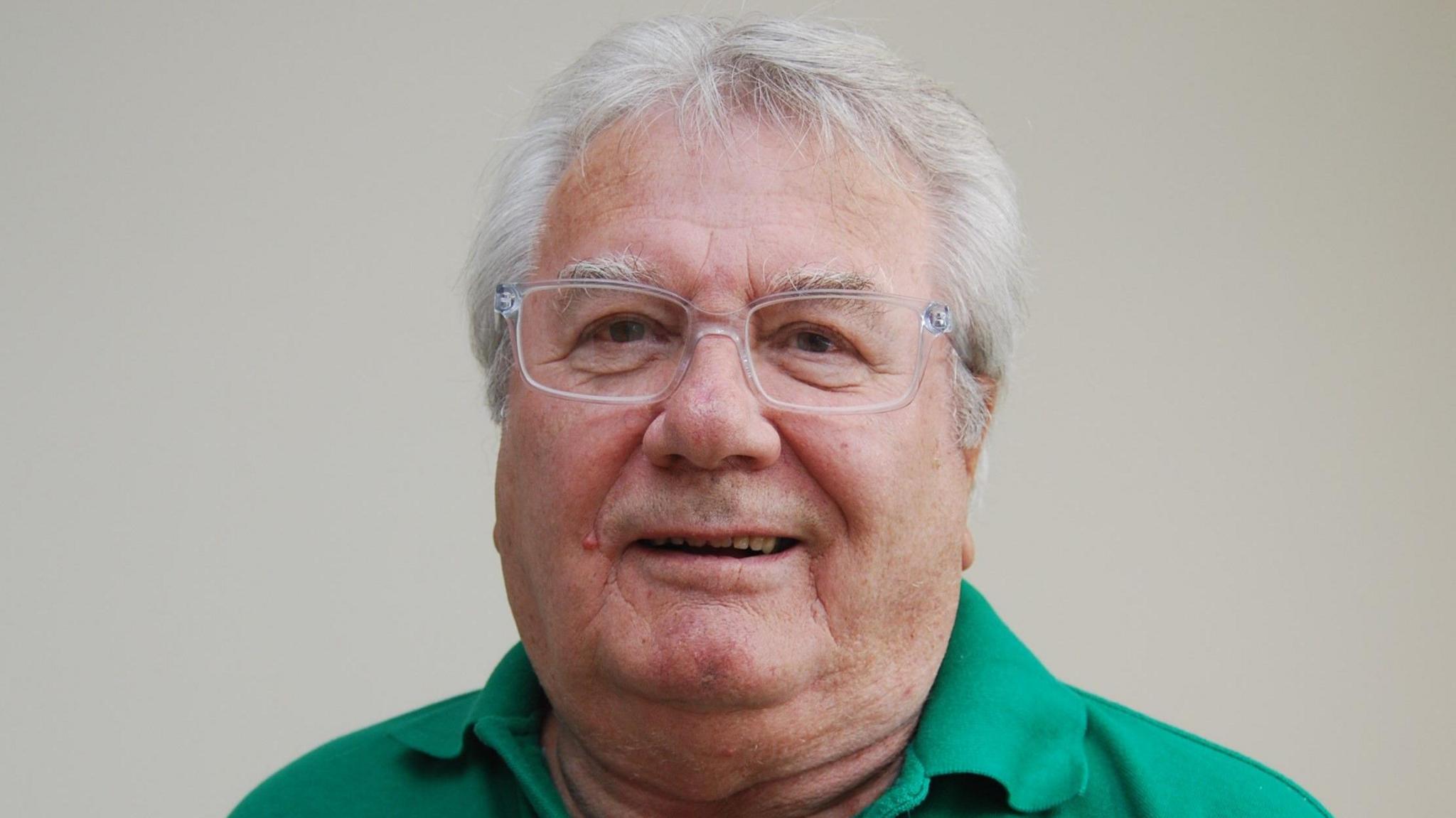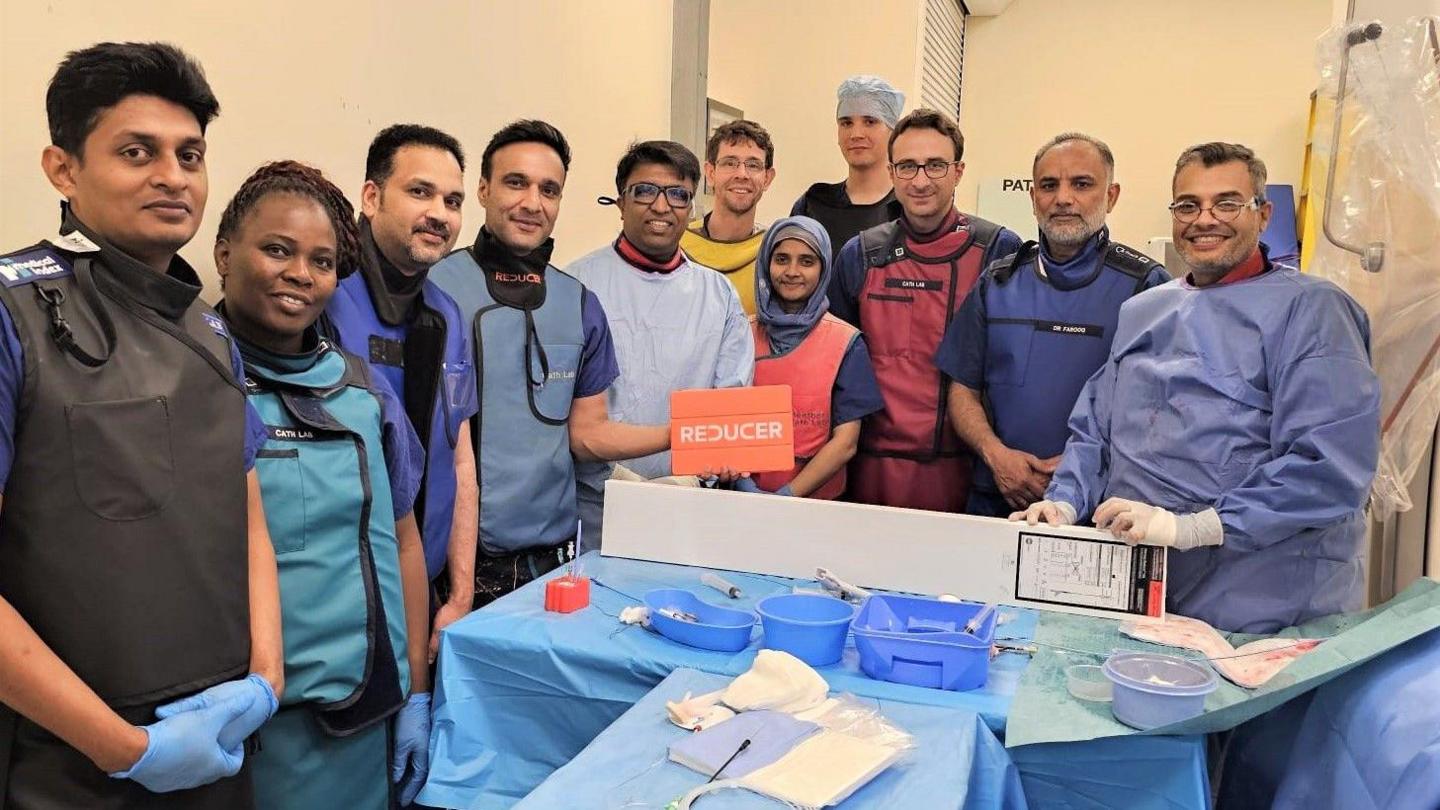Heart device gives angina patient new lease of life

Peter Bridges said the new heart stent device had changed his life
- Published
A man who has suffered with angina for 25 years says a new treatment has changed his life.
Peter Bridges, 77, from Great Easton, near Corby in Northamptonshire, is one of the first people in the county to undergo a "coronary sinus reducer implantation".
The procedure has traditionally only been carried out at specialist heart hospitals but is now available at Kettering General.
Mr Bridges said he was now "enjoying a life I never thought I could be destined for in my later years".
Mr Bridges said he first noticed symptoms of his angina in 1999.
"I could be talking on the phone and it could attack me, I could be reading a book, I could be fast asleep," he said.
"You get this crashing pain across your chest."

Dr Prashanth Raju (fifth from left) and the cardiac team at Kettering General Hospital
Mr Bridges has a severe form of the disease - called refractory angina - caused by the heart not receiving enough blood.
It has left him unable to take part in the sports he loved and has restricted his family life.
He has had 16 coronary stents - short tubes which widen blocked arteries - fitted at Kettering and underwent a triple bypass operation in Leicester.
The breakthrough came when he was offered the chance to become one of the first in the county to have the coronary sinus reducer implantation.
'Hourglass-shaped stent'
Dr Prashanth Raju, clinical director of cardiology at Kettering General, said: "This is a new procedure for Northamptonshire and has traditionally only been carried out at specialist heart hospitals.
"A small flexible catheter is passed through the jugular vein in the neck into the right side of the heart under X-ray guidance - and then an hourglass-shaped stainless steel stent is inserted into the main coronary sinus.
"After about twelve weeks, once the stent is fully covered with cells and healed, the patient should start noticing the benefits."
A total of 12 patients have had the surgery at Kettering, with three more planned for August.

Peter Bridges said he was now able to enjoy life
A few months have passed since Mr Bridges went through the procedure, and he recalled realising what a difference it had made during a family trip to East Carlton Country Park.
"I played with the grandchildren, and I was able to run around and take them into the playground, and that was a very important day for me," he said.
"I am enjoying a life I never thought I could be destined for in my later years, and it's all down to this little thing that looks a bit like a tiny egg timer."
Get in touch
Do you have a story suggestion for Northamptonshire?
Follow Northamptonshire news on BBC Sounds, Facebook, external, Instagram, external and X, external.
Related topics
- Published29 July 2024

- Published12 February 2022

- Published30 September 2019
